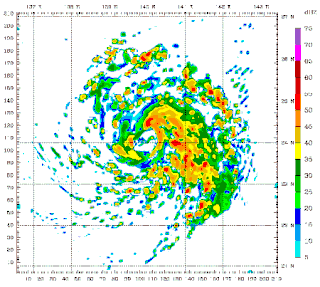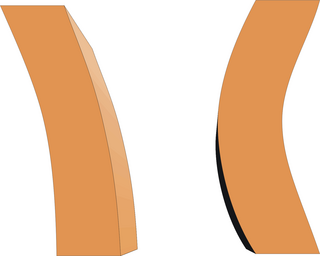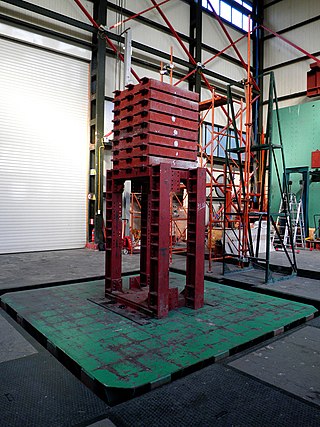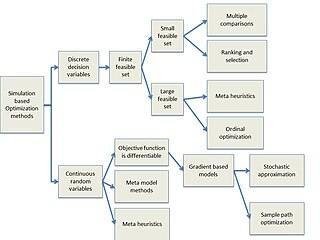In destructive testing tests are carried out to the specimen's failure, in order to understand a specimen's performance or material behavior under different loads. These tests are generally much easier to carry out, yield more information, and are easier to interpret than nondestructive testing.

Computer simulation is the running of a mathematical model on a computer, the model being designed to represent the behaviour of, or the outcome of, a real-world or physical system. The reliability of some mathematical models can be determined by comparing their results to the real-world outcomes they aim to predict. Computer simulations have become a useful tool for the mathematical modeling of many natural systems in physics, astrophysics, climatology, chemistry, biology and manufacturing, as well as human systems in economics, psychology, social science, health care and engineering. Simulation of a system is represented as the running of the system's model. It can be used to explore and gain new insights into new technology and to estimate the performance of systems too complex for analytical solutions.

Soil liquefaction occurs when a cohesionless saturated or partially saturated soil substantially loses strength and stiffness in response to an applied stress such as shaking during an earthquake or other sudden change in stress condition, in which material that is ordinarily a solid behaves like a liquid. In soil mechanics, the term "liquefied" was first used by Allen Hazen in reference to the 1918 failure of the Calaveras Dam in California. He described the mechanism of flow liquefaction of the embankment dam as:
If the pressure of the water in the pores is great enough to carry all the load, it will have the effect of holding the particles apart and of producing a condition that is practically equivalent to that of quicksand... the initial movement of some part of the material might result in accumulating pressure, first on one point, and then on another, successively, as the early points of concentration were liquefied.

Seismic analysis is a subset of structural analysis and is the calculation of the response of a building structure to earthquakes. It is part of the process of structural design, earthquake engineering or structural assessment and retrofit in regions where earthquakes are prevalent.
Earthquake engineering is an interdisciplinary branch of engineering that designs and analyzes structures, such as buildings and bridges, with earthquakes in mind. Its overall goal is to make such structures more resistant to earthquakes. An earthquake engineer aims to construct structures that will not be damaged in minor shaking and will avoid serious damage or collapse in a major earthquake. A properly engineered structure does not necessarily have to be extremely strong or expensive. It has to be properly designed to withstand the seismic effects while sustaining an acceptable level of damage.
The George E. Brown, Jr. Network for Earthquake Engineering Simulation (NEES) was created by the National Science Foundation (NSF) to improve infrastructure design and construction practices to prevent or minimize damage during an earthquake or tsunami. Its headquarters were at Purdue University in West Lafayette, Indiana as part of cooperative agreement #CMMI-0927178, and it ran from 2009 till 2014. The mission of NEES is to accelerate improvements in seismic design and performance by serving as a collaboratory for discovery and innovation.

Seismic base isolation, also known as base isolation, or base isolation system, is one of the most popular means of protecting a structure against earthquake forces. It is a collection of structural elements which should substantially decouple a superstructure from its substructure that is in turn resting on the shaking ground, thus protecting a building or non-building structure's integrity.

National Center for Research on Earthquake Engineering is an organisation in Da'an District, Taipei, Taiwan.

There are different experimental techniques which can be used to test the response of structures and soil or rock slopes to verify their seismic performance. One of these is using an earthquake shaking table. This device is used for shaking scaled slopes, structural models or building components with a wide range of simulated ground motions, including reproductions of recorded earthquake time-histories.

Earthquake-resistant or aseismic structures are designed to protect buildings to some or greater extent from earthquakes. While no structure can be entirely impervious to earthquake damage, the goal of earthquake engineering is to erect structures that fare better during seismic activity than their conventional counterparts. According to building codes, earthquake-resistant structures are intended to withstand the largest earthquake of a certain probability that is likely to occur at their location. This means the loss of life should be minimized by preventing collapse of the buildings for rare earthquakes while the loss of the functionality should be limited for more frequent ones.
Dynamic decision-making (DDM) is interdependent decision-making that takes place in an environment that changes over time either due to the previous actions of the decision maker or due to events that are outside of the control of the decision maker. In this sense, dynamic decisions, unlike simple and conventional one-time decisions, are typically more complex and occur in real-time and involve observing the extent to which people are able to use their experience to control a particular complex system, including the types of experience that lead to better decisions over time.
A seismic metamaterial, is a metamaterial that is designed to counteract the adverse effects of seismic waves on artificial structures, which exist on or near the surface of the Earth. Current designs of seismic metamaterials utilize configurations of boreholes, trees or proposed underground resonators to act as a large scale material. Experiments have observed both reflections and bandgap attenuation from artificially induced seismic waves. These are the first experiments to verify that seismic metamaterials can be measured for frequencies below 100 Hz, where damage from Rayleigh waves is the most harmful to artificial structures.
Solid waste landfills can be affected by seismic activity. The tension in a landfill liner rises significantly during an earthquake, and can lead to stretching or tearing of the material. The top of the landfill may crack, and methane collection systems can be moved relative to the cover.
In geophysics, geology, civil engineering, and related disciplines, seismic noise is a generic name for a relatively persistent vibration of the ground, due to a multitude of causes, that is often a non-interpretable or unwanted component of signals recorded by seismometers.
Simulation modeling is the process of creating and analyzing a digital prototype of a physical model to predict its performance in the real world. Simulation modeling is used to help designers and engineers understand whether, under what conditions, and in which ways a part could fail and what loads it can withstand. Simulation modeling can also help to predict fluid flow and heat transfer patterns. It analyses the approximate working conditions by applying the simulation software.
The Triaxial Earthquake and Shock Simulator (TESS) is an experimental 3-dimensional "shake table," is used to test the ability of systems and facilities to survive under realistic conditions of weapons-induced shock and vibration, and earthquake ground motion. TESS serves in a wide variety of testing roles, including testing shock survivability of computer equipment (shown below), computer floors, and shock isolation systems in military facilities; studying the behavior of structural building models and components in seismic environments with a focus on ways to increase the seismic resistance of steel, reinforced concrete, and masonry structures; subjecting full-size electronic systems to simulated transportation and seismic environments; and determining the effects of shipboard vibrations on naval systems.
Incremental dynamic analysis (IDA) is a computational analysis method of earthquake engineering for performing a comprehensive assessment of the behavior of structures under seismic loads. It has been developed to build upon the results of probabilistic seismic hazard analysis in order to estimate the seismic risk faced by a given structure. It can be considered to be the dynamic equivalent of the static pushover analysis.
Mete Avni Sözen was Kettelhut Distinguished Professor of Structural Engineering at Purdue University, Indiana, United States from 1992 to 2018.

Geotechnical centrifuge modeling is a technique for testing physical scale models of geotechnical engineering systems such as natural and man-made slopes and earth retaining structures and building or bridge foundations.

Simulation-based optimization integrates optimization techniques into simulation modeling and analysis. Because of the complexity of the simulation, the objective function may become difficult and expensive to evaluate. Usually, the underlying simulation model is stochastic, so that the objective function must be estimated using statistical estimation techniques.










